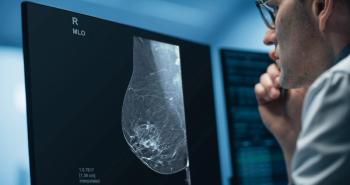
Image Metrics takes new approach to computer-aided detection
Programmers model normality to find pathologyThe development of algorithms that define disease is an established route in computer-aided detection. Some might argue it is the only route. But not Image Metrics. In sharp contrast to
Programmers model normality to find pathology
The development of algorithms that define disease is an established route in computer-aided detection. Some might argue it is the only route. But not Image Metrics. In sharp contrast to this widely accepted approach, the Cheshire, U.K., company uses detailed statistical models of normal anatomical structures to uncover abnormalities.
When models that define "normal" rather than abnormal are applied, any deviation is readily identifiable, according to Nicholas Perrett, marketing director for Image Metrics. CAD software based on normality has the added advantage of being less time- and cost-intensive to produce.
"Designing algorithms can take many years and is usually very expensive in terms of R&D," Perrett said. "And they're not scalable. Once you've designed a set of algorithms to evaluate an anatomical area, they can be used only to evaluate that one area."
By contrast, models of an anatomical area can be built in a matter of weeks or months. That, he said, is a major distinction between Image Metrics' Optasia and other CAD programs.
Once on the market, probably in Europe initially, Optasia software will be sold to large information technology companies. Its initial application may be osteoporosis. A detailed marketing plan is still in development.
"The value proposition for this technology seems to be strongest in the clinical trial segment--anywhere that the diagnosis decision is complicated by having large volumes of images to analyze," Perrett said.
Ultimately, strategists at Image Metrics hope to establish a library with many types of anatomical models. For now, the company is mostly focused on securing additional financing (they raised $1.3 million of seed money in early 2001 and $4.5 million in venture capital in July 2002), achieving both FDA and European clearance, and identifying partners and potential customers.
"We're targeting the major imaging players," Perrett said. "We're asking them which models they want. Ideally, we'd like to provide software components that can be integrated into already existing software, although that might not always be possible."
Newsletter
Stay at the forefront of radiology with the Diagnostic Imaging newsletter, delivering the latest news, clinical insights, and imaging advancements for today’s radiologists.




























